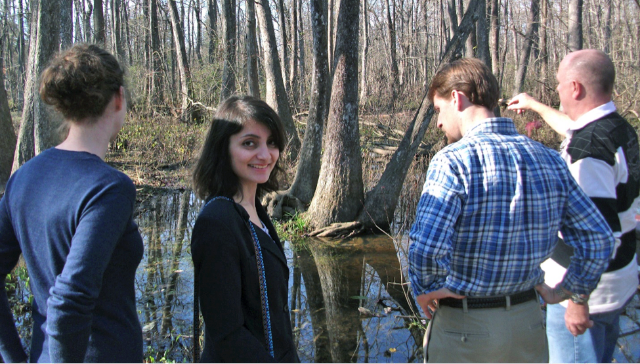Another place I visited to document its history as part of the Mughal Gardens was Shalimar Gardens. These gardens are located near the renowned University of Engineering and Technology, just along the Grand Trunk or GT Road. These gardens were in fact influenced by the Shalimar Gardens in Srinagar, in India. The latter were built by the Mughal Emperor Jehangir, and they too have a similar architecture, with gardens linked through a channel. Jehangir's son, Shah Jahan was responsible for the Pakistan-side Shalimar Gardens. At this time, the Mughal Empire was at its zenith.
The Shalimar Gardens were laid out as a Persian paradise garden intended to create a representation of an earthly utopia in which humans co-exist in perfect harmony with all elements of nature.
The main entrance of the Garden is through GT Road. Going to the gardens, you first see a redstone wall with small decorative windows. Then, the thing which strikes out are the fountains in the water channel which stretches a very long way.
There are around 2-3 terraces in the garden. The 3rd and highest terrace is named Farah Baksh meaning Bestower of Pleasure, the 2nd level is known as Faiz Baksh meaning Bestower of Goodness and the 1st level terrace is the Hayat Baksh meaning Bestower of Life.
The Gardens were built by the Mughal royal family primarily as a venue for them to entertain guests, though a large portion was open to the general public. Unlike the gardens in Kashmir which relied on naturally sloping landscapes, the waterworks in Lahore required extensive engineering to create artificial cascades and terraces.
This particular site for the gardens was chosen for its stable water supply.The project was managed by Khalilullah Khan, a noble of Shah Jahan's court, in cooperation with and Mulla Alaul Maulk Tuni. Ali Mardan Khan was responsible for most of the construction, and had a 100-mile-long canal built to bring water from the foothills of Kashmir to the site.
The site of the Shalimar Gardens originally belonged to the Arain Mian Family Baghbanpura. Mian Muhammad Yusuf, then the head of the Arain Mian family, ceded the site of Ishaq Pura to the Emperor Shah Jahan in order for the gardens to be built. In return, Shah Jahan granted the Arain Mian family governance of the Shalimar Gardens, and and the gardens remained under their custodianship for over 350 years.
Interestingly, the Gardens in the early 1900's were so far off from the main city that couples would presumably honeymoon there! In fact, British couples would hire tongas and some cavalry to take them to the Gardens!









